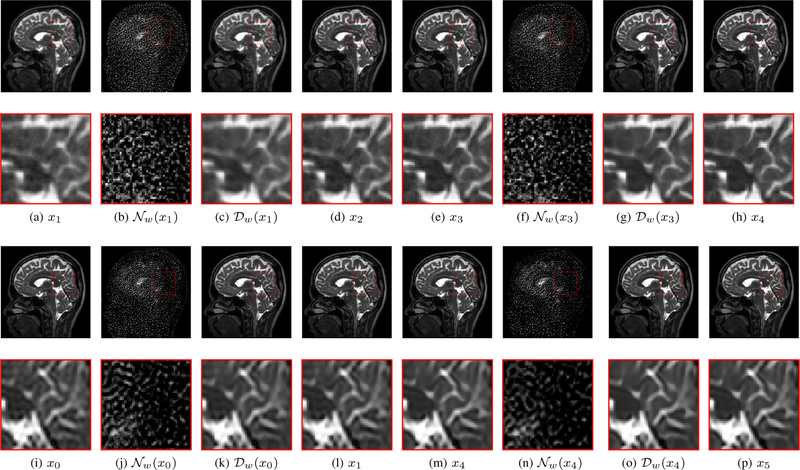Fig. 5.
Intermediate results in the deep network. Figure (a)-(h) corresponds to the 16-fold acceleration setting, where (a)-(d) corresponds to iteration 2 and (e)-(h) corresponds to iteration 4. Note that the network at each iteration estimates the alias and noise signals denoted by from the signal to obtain the denoised image . Figures (i)-(p) corresponds to the super-resolution setting considered in Fig. 4. (i)-(l) corresponds to iteration 1 and (m)-(p) corresponds to iterations 5. At ith iteration, xi−1 is the input and xi is the output. Note that the nature of the noise in both cases is very different. Nevertheless, the same network trained at 10x setting is capable of effectively removing the undersampling artifacts.

